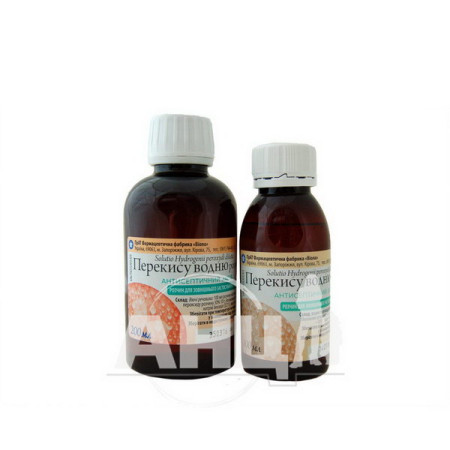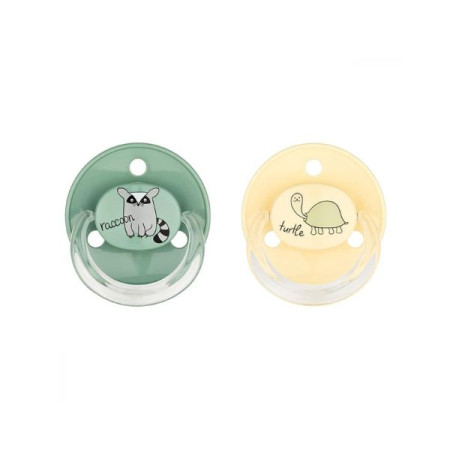Papaverine-Darnitsa solution for injection 2% ampoule 2 ml No. 10

Instructions Papaverine-Darnitsa solution for injection 2% ampoule 2 ml No. 10
Composition
active ingredient: papaverine;
1 ml of solution contains papaverine hydrochloride 20 mg;
Excipients: disodium edetate, DL-methionine, water for injections.
Dosage form
Solution for injection.
Main physicochemical properties: clear slightly yellowish liquid.
Pharmacotherapeutic group
Drugs used in functional disorders of the digestive system. Papaverine and its derivatives. Papaverine. ATX code A03A D01.
Pharmacological properties
Pharmacodynamics
Papaverine is an alkaloid found in opium. Papaverine is a myotropic antispasmodic. It reduces tone, reduces the contractile activity of smooth muscles and therefore causes a vasodilator and antispasmodic effect. Papaverine is an inhibitor of the enzyme phosphodiesterase, which causes intracellular accumulation of cyclic 3',5'-adenosine monophosphate (cAMP). The accumulation of cAMP leads to impaired contractility of smooth muscles and their relaxation in spastic states. The effect of the drug on the central nervous system is weak, only in high doses does it exhibit some sedative effect.
Pharmacokinetics
When administered parenterally, the drug quickly forms stable complexes with serum albumins. It easily penetrates histohematological barriers. It is metabolized in the liver. About 60% is excreted in the form of compounds, mainly phenolic, with glucuronic acid and only in a small amount - in unchanged form. The half-life (T1/2) is 0.5–2 hours.
Indication
Spasms of smooth muscles of the abdominal organs (pylorospasm, irritable bowel syndrome, cholecystitis, attacks of gallstone disease). Spasms of the urinary tract, renal colic. Spasm of cerebral vessels. Spasms of peripheral vessels (endarteritis).
Contraindication
Hypersensitivity to the components of the drug, arterial hypotension, atrioventricular conduction disorders, coma, respiratory depression, simultaneous use of monoamine oxidase inhibitors, glaucoma, hepatic failure, bronchoobstructive syndrome, age over 75 years (risk of hyperthermia).
Interaction with other medicinal products and other types of interactions
The spasmolytic effect of papaverine is enhanced by barbiturates, diphenhydramine (diphenhydramine), metamizole (analgin), diclofenac. The hypotensive effect is enhanced when used together with antihypertensive drugs of other groups, as well as with tricyclic antidepressants, procainamide, reserpine, quinidine. Papaverine can reduce the antiparkinsonian effect of levodopa and the hypotensive effect of methyldopa. If used simultaneously with alprostadil for intracavernous administration, there is a risk of priapism. Phentolamine potentiates the effect of papaverine on the cavernous bodies of the penis with co-administration.
When used simultaneously with cardiac glycosides, a pronounced increase in myocardial contractile function is observed due to a decrease in total peripheral vascular resistance. After use with novocainamide, an increase in the hypotensive effect is possible.
It is possible to reduce the tonic effect of anticholinesterase drugs on smooth muscles under the influence of papaverine hydrochloride.
It is possible to reduce the antispasmodic activity of papaverine hydrochloride under the influence of morphine. However, papaverine hydrochloride is used together with morphine hydrochloride to reduce the spasmogenic effect of the latter and with promedol in case of pain from smooth muscle spasms.
There is evidence of the development of hepatitis when used concomitantly with furadonin.
In the combined use of reserpine drugs with papaverine hydrochloride, the antihypertensive effect is enhanced.
In combination with antidepressants, the hypotensive effect may be enhanced.
Pharmaceutically compatible with dibazol.
With simultaneous use, papaverine hydrochloride potentiates the effect of alcohol.
Smoking. In patients who smoke, the metabolism of papaverine is accelerated, and its plasma concentration and pharmacokinetic effects are reduced.
Application features
The drug should be prescribed with caution and in doses lower than the average therapeutic dose:
elderly and debilitated patients; patients with traumatic brain injury; patients with chronic renal failure; patients with supraventricular tachycardia, severe heart failure with decompensation; in adrenal insufficiency, hypothyroidism, prostatic hyperplasia, shock states.
Intravenously, the drug should be administered very slowly, monitoring blood pressure, heart rate, and electrocardiogram.
Intravenous injections of the drug should be administered with caution to patients with stenosing coronary sclerosis.
Hyperthermia may occur in elderly people.
Smoking impairs the effectiveness of the medicine.
During the period of use of the drug, it is necessary to stop drinking alcohol.
Important information about excipients.
This medicinal product contains less than 1 mmol sodium/dose, i.e. essentially sodium-free.
Ability to influence reaction speed when driving vehicles or other mechanisms
During treatment with the drug, you should refrain from driving or working with other complex mechanisms.
Use during pregnancy or breastfeeding
The safety and efficacy of the drug during pregnancy or breastfeeding have not been established. Breastfeeding should be discontinued during treatment with the drug.
Method of administration and doses
The drug is administered subcutaneously, intramuscularly and intravenously.
Administer subcutaneously and intramuscularly to adults and children over 14 years of age 0.5–2 ml (10–40 mg) of a 2% solution, and intravenously very slowly, at a rate of 3–5 ml/min, by dissolving 1 ml of a 2% solution of papaverine hydrochloride (20 mg) in 10–20 ml of 0.9% sodium chloride solution. Intravenous administration is most effective.
For elderly patients, a single dose at the beginning of treatment should not exceed 10 mg (0.5 ml of a 2% solution).
Maximum doses for adults for subcutaneous or intramuscular administration: single - 100 mg (5 ml of 2% solution), daily - 300 mg (15 ml of 2% solution); for intravenous administration: single - 20 mg (1 ml of 2% solution), daily - 120 mg (6 ml of 2% solution).
Children aged 1 to 14 years should take the medicine 2–3 times a day. A single dose is 0.7–1 mg/kg of body weight.
The maximum daily dose for children is (regardless of the route of administration):
at the age of 1–2 years – 20 mg (1 ml of 2% solution); 3–4 years – 30 mg (1.5 ml of 2% solution); 5–6 years – 40 mg (2 ml of 2% solution); 7–9 years – 60 mg (3 ml of 2% solution); 10–14 years – 100 mg (5 ml of 2% solution).
Children
The medicine should be used in children from 1 year of age.
Overdose
Symptoms: visual impairment, diplopia, weakness, dry mouth, constipation, flushing of the upper body, hyperventilation, nystagmus, ataxia, tachycardia, hypotension, asystole, ventricular fibrillation, collapse. When using high doses of the drug and its rapid intravenous administration, arrhythmias or complete atrioventricular block may develop. Papaverine in very high doses has a moderate sedative effect.
Treatment: discontinue use of the drug. Treatment is symptomatic. Completely removed from the blood by hemodialysis. There is no specific antidote.
Adverse reactions
On the part of the organs of vision: visual impairment, diplopia.
Respiratory, thoracic and mediastinal disorders: apnea.
Gastrointestinal: anorexia, nausea, constipation, dry mouth, diarrhea.
From the liver and biliary tract: jaundice, impaired liver function, increased activity of hepatic transaminases.
From the nervous system: drowsiness, increased sweating, weakness, headache, dizziness.
Cardiovascular system: arrhythmias, tachycardia, hypotension, partial or complete atrioventricular block, asystole, ventricular extrasystole, ventricular fibrillation, ventricular flutter, collapse.
Blood and lymphatic system disorders: eosinophilia.
Immune system disorders: hypersensitivity reactions, including respiratory reactions, anaphylactic shock, urticaria.
Skin and subcutaneous tissue disorders: itching, skin rash, hyperemia of the skin of the upper body, face and hands.
General disorders and administration site conditions: fever, injection site reactions including injection site thrombosis.
Reporting of suspected adverse reactions.
Reporting suspected adverse reactions after the marketing authorisation of a medicinal product is an important procedure. It allows for continued monitoring of the benefit-risk balance of the medicinal product in question. Healthcare professionals should report any suspected adverse reactions via the national reporting system.
Expiration date
3 years.
Storage conditions
Store in the original packaging at a temperature not exceeding 25 ° C. Do not freeze.
Keep out of reach of children.
Packaging
2 ml in an ampoule; 5 ampoules in a contour blister pack; 2 contour blister packs in a pack.
Vacation category
According to the recipe.
Producer
PrJSC "Pharmaceutical Company "Darnitsa".
Location of the manufacturer and its business address
Ukraine, 02093, Kyiv, Boryspilska St., 13.
There are no reviews for this product.
There are no reviews for this product, be the first to leave your review.
No questions about this product, be the first and ask your question.















